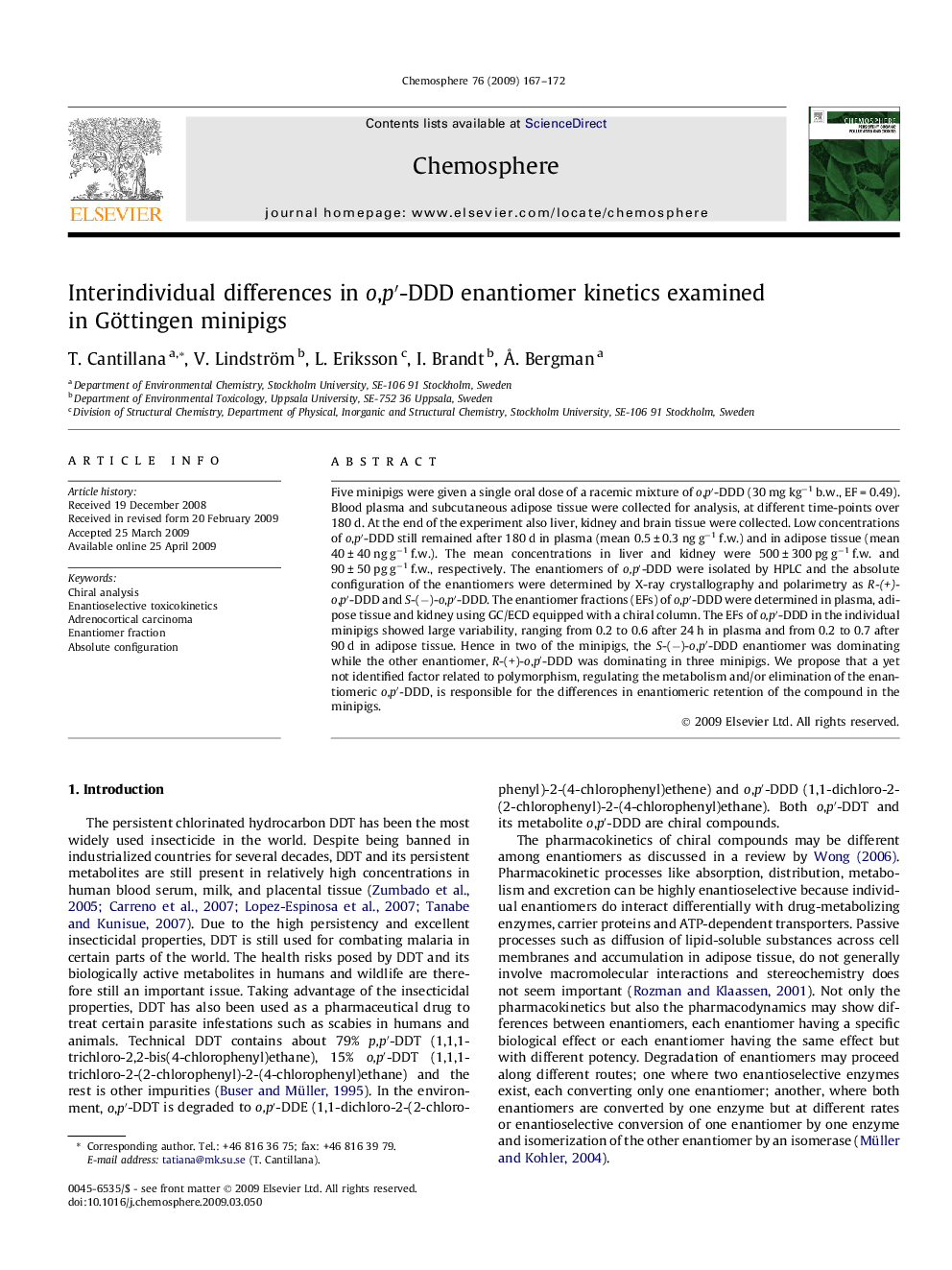| Article ID | Journal | Published Year | Pages | File Type |
|---|---|---|---|---|
| 4412921 | Chemosphere | 2009 | 6 Pages |
Five minipigs were given a single oral dose of a racemic mixture of o,p′-DDD (30 mg kg−1 b.w., EF = 0.49). Blood plasma and subcutaneous adipose tissue were collected for analysis, at different time-points over 180 d. At the end of the experiment also liver, kidney and brain tissue were collected. Low concentrations of o,p′-DDD still remained after 180 d in plasma (mean 0.5 ± 0.3 ng g−1 f.w.) and in adipose tissue (mean 40 ± 40 ng g−1 f.w.). The mean concentrations in liver and kidney were 500 ± 300 pg g−1 f.w. and 90 ± 50 pg g−1 f.w., respectively. The enantiomers of o,p′-DDD were isolated by HPLC and the absolute configuration of the enantiomers were determined by X-ray crystallography and polarimetry as R-(+)-o,p′-DDD and S-(−)-o,p′-DDD. The enantiomer fractions (EFs) of o,p′-DDD were determined in plasma, adipose tissue and kidney using GC/ECD equipped with a chiral column. The EFs of o,p′-DDD in the individual minipigs showed large variability, ranging from 0.2 to 0.6 after 24 h in plasma and from 0.2 to 0.7 after 90 d in adipose tissue. Hence in two of the minipigs, the S-(−)-o,p′-DDD enantiomer was dominating while the other enantiomer, R-(+)-o,p′-DDD was dominating in three minipigs. We propose that a yet not identified factor related to polymorphism, regulating the metabolism and/or elimination of the enantiomeric o,p′-DDD, is responsible for the differences in enantiomeric retention of the compound in the minipigs.
